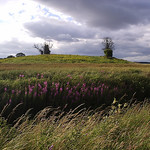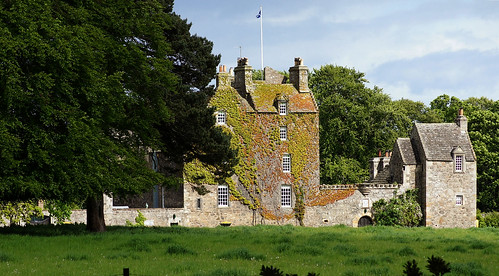Leuchars Castle
Now demolished motte and bailey castle to the North of modern Leuchars standing on Castle KNowe. Nothing to be seen on the crown of the hill.
Leuchars Castle, was a castle that was located near Leuchars, Fife, Scotland. A motte and bailey castle was built in the 12th century. The town was created a barony in the time of King William the Lion. The castle was built of stone in the 13th century. Gilbert Marshal, Earl of Pembroke, attacked and slighted the castle in 1327. The castle was besieged and attacked in 1337 by forces of Sir Andrew Murray and the English garrison surrendered. Rebuilt in the 16th century, the castle was demolished in the 18th century.
From architectural record:
The barony of Leuchars existed in the time of William the Lion (1165-1214), and the castle existed before 1264. It was demolished early in the 19th century.
A H Millar 1895.
Leuchars Castle - the site was originally a mote-hill, with a summit 100 yds long by 60 yds wide and 25ft high, which was later crowned by a stone castle, occupied at least as late as 1565, and part still standing at the close of the 18th century. A moat surrounded the site.
The area is cultivated, and fragments of mortared stone, shell pinnings, glass and tile can be picked up. In 1923 Dr Mears, Leuchars, found a bronze plate just to the S of the mound. It bears figures in 12th/13th century costume, and is now in the National Museum.
RCAHMS 1933, visited 1925.
A portion of a sculptured cross-slab was found on the Castle Knowe, Leuchars - the site of the former Leuchars Castle. There is no masonry left here, and subsequent examination did not lead to the recovery of any other fragments of the slab. The slab, which has been placed in Leuchars Church, may have come from a site near the church where, tradition states, a Celtic chapel (St Bonoc's) was situated.
N M Johnson 1948.
Castle Motte is an oval, flat-topped mound, measuring 100m by 70m by c.8m high. A quantity of building material and oyster shells occurs on the surface, and a number of stone blocks have been placed among two clumps of trees on the mound.




